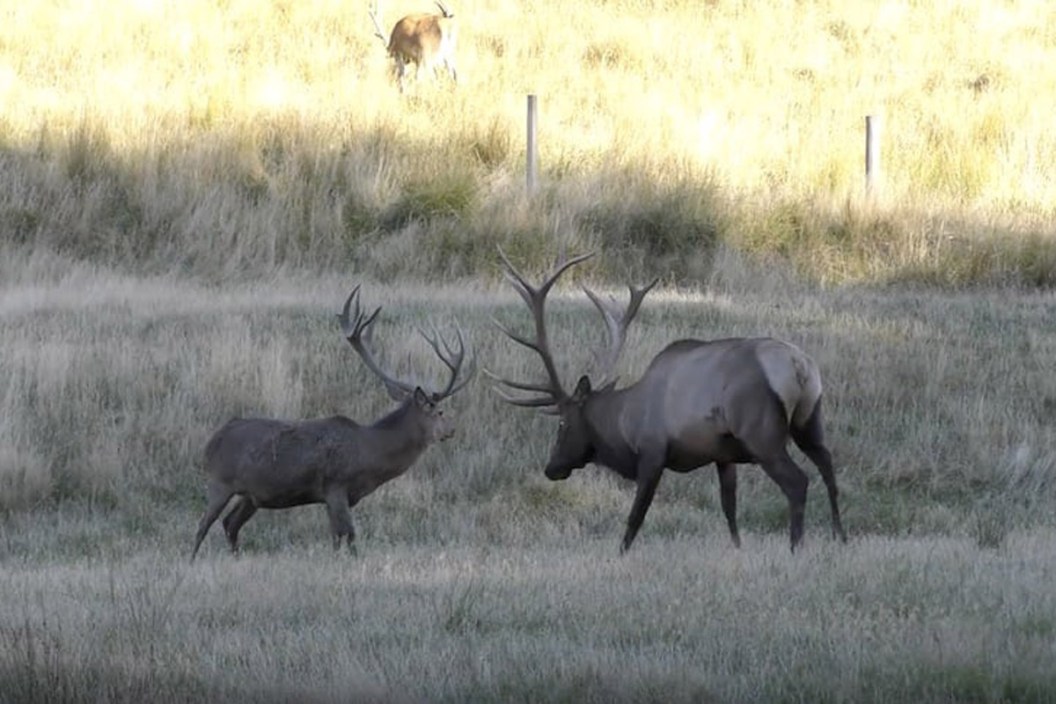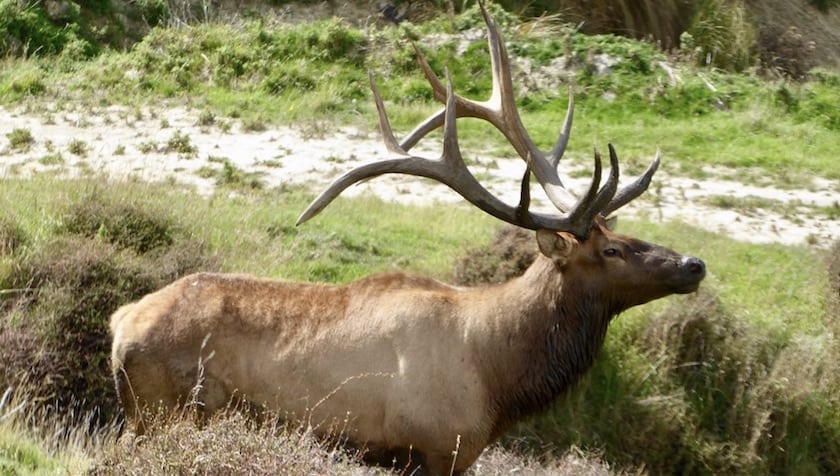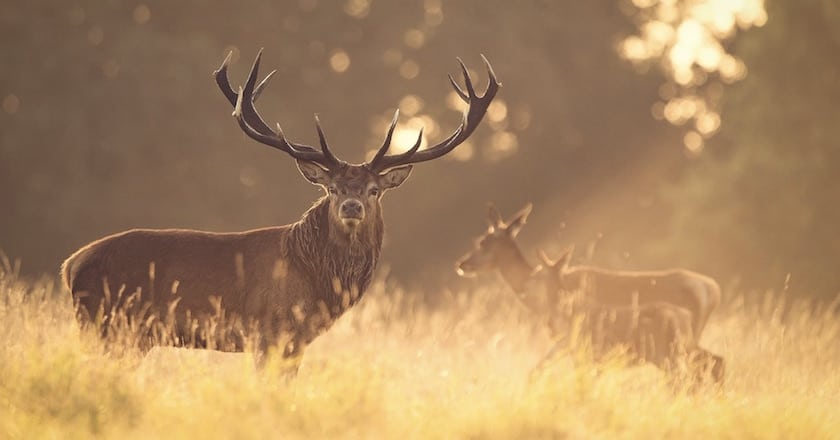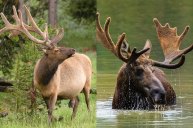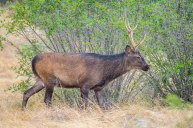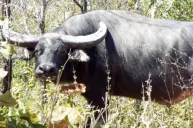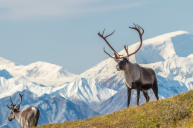I think most people would agree red deer and elk look very similar at first glance, and it can be easy to confuse the two. In fact, scientists actually thought elk were a subspecies of red deer for many years. However, recent DNA analysis has confirmed they're actually two different deer species in the Cervidae family. Fortunately, once you know how to spot the differences between a red stag and a bull elk, it's pretty simple to identify each animal.
We'll start with the elk (Cervus canadensis). Also known as the Wapiti, there are several different subspecies of elk, of which the Rocky Mountain elk, the Roosevelt elk, and the tule elk are best known. There are even a couple different subspecies of elk in the Asian countries of China, Kazakhstan, Korea, Mongolia, and Russia. Hunters have also introduced Rocky Mountain Elk to New Zealand.
At the time of the first European settlement of the New World, elk lived in almost all of North America. Now, aside from a few populations reestablished in the Great Plains and a couple of eastern states, their range is restricted primarily to the Rocky Mountain states and provinces of the United States and Canada, such as California, Oregon, Washington, and British Columbia.
Male elk are called bulls and females are called cows. Average size varies, but elk are one of the largest species in the deer family. Mature bull elk typically weigh 600-1,000 pounds. As you can see in the photo below, Elk have a two-tone coat with a light-brown body that transitions into a much darker mane. They also have a distinctive white patch of fur on their rump. Elk also have very large and impressive antlers. A mature bull Rocky Mountain elk normally has six and sometimes seven (or more) tines on each antler.
Red deer (Cervus elaphus) are originally from the British Isles (England, Ireland and Scotland), all over Western, Eastern, and Central Europe, Scandanavia, Northern Africa, and Southwest Asia. Additionally, hunters have introduced red deer in many countries outside of Europe and Asia. Among these, Argentina and New Zealand are world-famous for their red deer hunting. Males are called stags and female red deer are hinds. With an average body size ranging from 300-500 pounds, red deer are quite a bit smaller than elk. In fact, some of the smaller red deer are actually closer in size to whitetail or mule deer.
Red deer have a relatively dark, reddish-brown coat. However, their antlers are probably their most distinctive feature. Red stags have the largest antlers in the world relative to their body size. Their antlers also grow in a unique manner with a distinctive "crown" at the tips. Some tule or Roosevelt elk occasionally have a similar crown of points, but it's much more common with red deer.
One of the biggest differences between elk and red stag is their size. Red deer are by no means a small animal, but elk are significantly larger. The video below of a stag sparring with an elk on a game farm in New Zealand does a good job of showing the difference in size between the two animals. And, we can clearly see both are fairly mature males, so even a smaller bull elk would likely have a size advantage on most red deer, mature or not. However, even though the elk's antlers are considerably bigger than the red deer's, it's shocking how comparable they are, despite the stag being drastically smaller in the body.
Another big difference between red deer and elk is the sound they make during the rut. Below we see a bull elk producing one of the most recognizable sounds American wilderness has to offer: the bugle. According to the National Park Service, bull elk will bugle at twilight from early September through October in order to make their fitness known to nearby cow elk. The elk rut can begin as early as late August and end as late as early November, but peak activity tends to take place in the month of October.
Red stags, however, make more of a "roar" sound than anything, which doesn't sound like an elk bugle whatsoever. The rut also occurs at a completely different time of the year, as New Zealand red deer begin to display rut behavior from late March through April. According to the New Zealand Department of Conservation, mid-April is when the rut reaches its peak, as at this time, mature stags are beginning to establish dominance. In fact, locals often refer to the rut itself as "the roar," as it's during this time that you can hear stags communicating with hinds to advertise their status. As you can see in the video below, the term fits the sound.
As you can see, both are magnificent animals that are indeed related, but they're also distinct species that inhabit different parts of the world. If you never saw the two of them standing side by side, it'd be easy to assume their more closely related than they are, but when you get a little closer and a little more personal, their differences are impossible to ignore.
Like what you see here? Check out John McAdams on his hunting blog. Learn more about the New Zealand Hunting packages Big Game Hunting Adventures offers on their web site or follow them on Facebook, YouTube, & Instagram.
